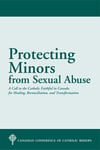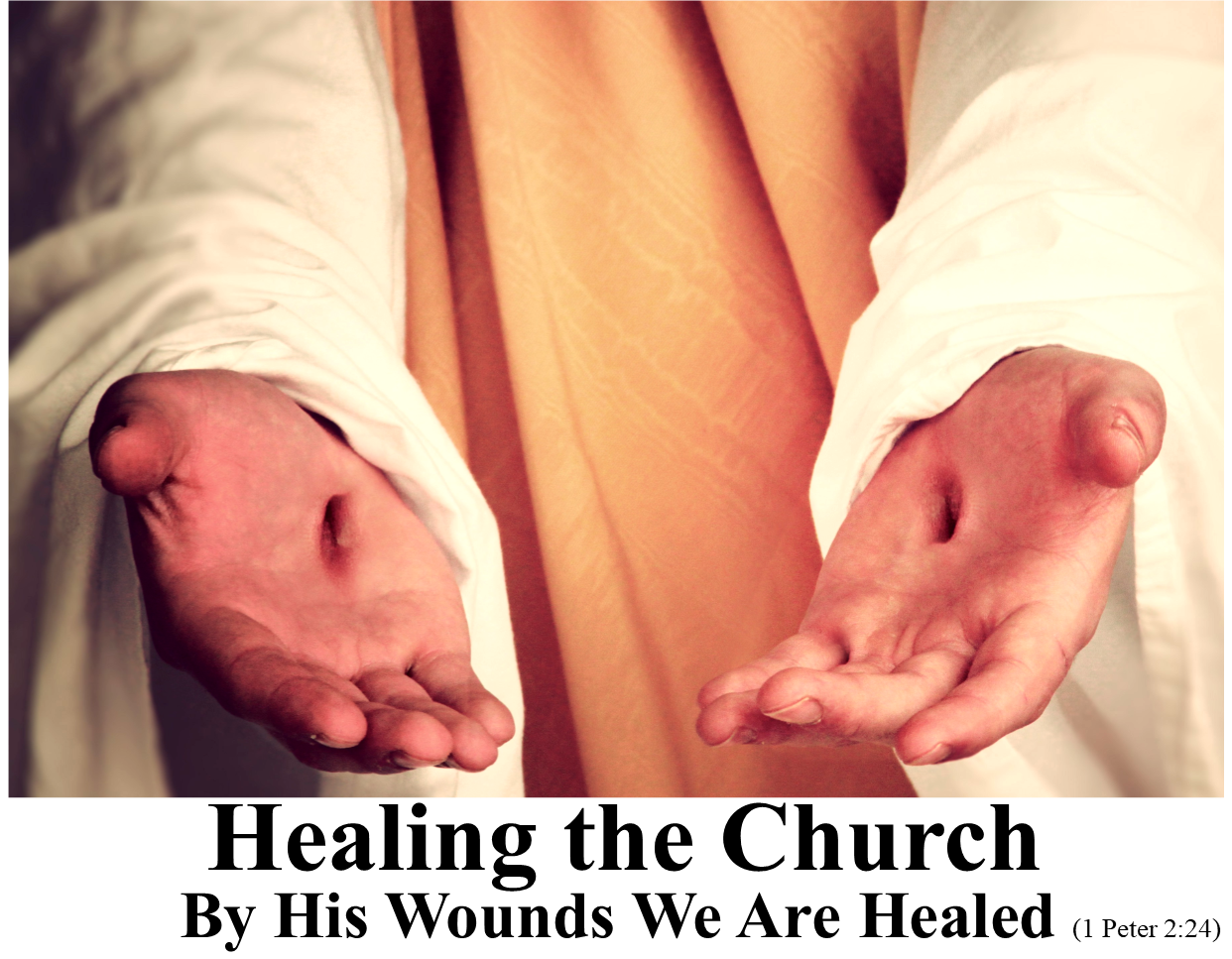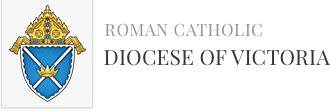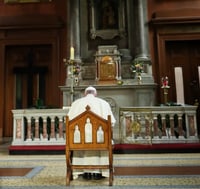Background for Catholics
|

|
Over the past several months, there has been a national conversation on the tragic history of residential schools in Canada. The role of the Catholic Church in the residential school system has been a part of that discussion.
We acknowledge the terrible suffering that took place and condemn the system, established by the federal government and operated by faith communities, which separated children, often forcibly, from their parents and attempted to strip away their language, culture and identity.
The Catholic Church must atone for our involvement in this dark history. It is undeniable that some Catholic teachers (priests, religious men and women and lay staff) entrusted to care for children at residential schools assaulted the dignity of the students through mistreatment, neglect and abuse.
We echo the words of one of the original apologies made by the Missionary Oblates of Mary Immaculate in 1991:
"We apologize for the existence of the schools themselves, recognizing that the biggest abuse was not what happened in the schools, but that the schools themselves happened…We wish to apologize in a very particular way for the instances of physical and sexual abuse that occurred in those schools…Far from attempting to defend or rationalize these cases of abuse in any way, we wish to state publicly that we acknowledge they were inexcusable, intolerable and a betrayal of trust in one of its most serious forms. We deeply and very specifically, apologize to every victim of such abuse and we seek help in searching for means to bring about healing.”
To learn more about residential schools, click on the frequently asked questions below. You can also view all the information on this page in a single PDF document (good for printing) by clicking here.
While the federal residential school system began around 1883, the origins of the residential school system can be traced to as early as the 1830s (long before Confederation in 1867), when the Anglican Church established a residential school in Brantford, Ont. It is estimated that 150,000 children between the ages of three and 16 were forced to attend federal residential schools, operated in Canada between 1883 and 1996.
Of the 139 residential schools identified in the Indian Residential School Settlement Agreement (IRSSA), 46% (64 schools) were operated by Catholic entities; approximately 16 out of 70 Catholic dioceses in Canada were associated with the former residential schools, in addition to about three dozen Catholic religious communities.
In British Columbia, there were 18 residential schools: 10 were operated by Catholic entities; 3 by the Anglican Church; 4 by the United Church; and 1 was non-denominational.
Five residential schools were located in the Diocese of Victoria:
- Christie Residential School (1900 – 1983), operated by Catholic entities on Meares Island near Tofino
- Kuper Island Residential School (1890 – 1975), operated by Catholic entities on Penelakut Island, near Chemainus
- Alberni Indian Residential School (1920 – 1973), operated by the United Church in Port Alberni
- Ahousaht Indian Residential School (1901 – 1950), operated by the United Church on Flores Island near Tofino
- Michael’s Indian Residential School (1929 – 1975), operated by the Anglican Church in Alert Bay
To view a map of residential school locations and religious affiliation, click here.
Residential schools were established pursuant to federal government policies and legislation designed to control and assimilate Indigenous people. From the Truth and Reconciliation Commission (TRC) Final Report:
For over a century, the central goals of Canada’s Aboriginal policy were to eliminate Aboriginal governments; ignore Aboriginal rights; terminate the Treaties; and, through a process of assimilation, cause Aboriginal peoples to cease to exist as distinct legal, social, cultural, religious, and racial entities in Canada. The establishment and operation of residential schools were a central element of this policy. The federal government’s residential schools were part of a horrendous assumption that it was in an Indigenous child's interest to be taken from his or her parents and to be culturally and linguistically reconstructed.
- The federal government never established an adequate set of standards and regulations to guarantee the health and safety of residential school students.
- The federal government never adequately enforced the minimal standards and regulations that it did establish.
- The failure to establish and enforce adequate regulations was largely a function of the government’s determination to keep residential school costs to a minimum.
- The failure to establish and enforce adequate standards, coupled with the failure to adequately fund the schools, resulted in unnecessarily high death rates at residential schools.
(Information below has been sourced from the Truth & Reconciliation Report – Volume 4 – Missing Children & Unmarked Burials)
- Approximately 150,000 children attended residential schools in Canada. The Truth and Reconciliation Commission has identified 3,200 deaths on the Named and Unnamed registers of confirmed deaths of residential school students. Since the TRC report was published in 2015, the number of deceased children has most recently been updated to at least 4,100. Due to poor record keeping by the churches and the federal government, we may never know the total loss of life.
- For just under one-third (32%) of the 3,200 deaths identified in the TRC report, the government and the schools did not record the name of the student who died. For just under one-quarter of these deaths (23%), the government and the schools did not record the gender of the student who died. For just under one-half of these deaths (49%), the government and the schools did not record the cause of death. Aboriginal children in residential schools died at a far higher rate than school-aged children in the general population. (TRC Volume 4 – Missing Children & Unmarked Burials – Page 26-27)
- In cases where the cause of death was reported, tuberculosis was the dominant cause of death, representing 48.7% or 896 of residential school deaths. The next highest were influenza and pneumonia.
- Several of the schools were overwhelmed by the influenza pandemic of 1918–19. All but two of the children and all of the staff were stricken with influenza at the Fort St. James, British Columbia, school and the surrounding community in 1918. Seventy-eight people, including students, died. (TRC Report Summary, page 119)
- Underfed and malnourished students were particularly vulnerable to diseases such as tuberculosis and influenza (including the Spanish Flu epidemic of 1918–19). In large part due to the federal government underfunding the system, food was low in quantity and poor in quality.
- Students also died as the result of suicide and accidents. Statistical analysis identified six suicides. The TRC report also identified 57 drownings, 40 deaths in school fires and 20 deaths due to exposure. 38 students died in a variety of other accidents, including vehicle accidents and falls. At least 33 students died while running away: they would have died from a variety of causes, the most common being exposure and drowning.
- According to the Truth and Reconciliation Commission Report, parents frequently were not notified of a student’s death, and the bodies of students who died at residential schools were rarely sent home unless their parents could afford transportation. In an effort to limit expenses, the Department of Indian Affairs (as it was then called) was opposed to shipping the bodies of deceased children to their home communities.
We can expect that there will be burial grounds on most, if not all, land in close proximity to residential schools. Ground penetrating radar has been used to identify individual graves. The technology does not identify human remains.
According to the Truth and Reconciliation Commission:
“Sometimes virtually no cemetery information is readily available within the archival records, but knowledge of the existence and location of cemeteries is locally held.”
Faith communities, including Catholic entities, who operated residential schools should have done more to respect those who died, providing information to family members and respecting the dignity of every child entrusted to their care. Church leaders have spoken publicly about the need to dialogue with Indigenous leaders to ensure appropriate memorials are constructed to remember and honour those who died, including names of the deceased wherever possible.
Children were often interred with simple wooden crosses that have deteriorated and disappeared over the decades. At present, remains at the former residential school burial sites have not been identified. Local Indigenous leaders as well as historians have noted the need to identify the children buried on these sites. The school-related burial sites may also include the remains of lay teachers and their own children, as well as nuns, priests and other members of the community.
From the Truth and Reconciliation Commission Report:
In the 1940’s, Indian Affairs was prepared to cover the burial costs of residential school students who died in hospital. It was not, however, prepared to pay for the transportation of the body to the student’s home community. The Social Welfare section of the 1958 Indian Affairs field manual provided direction on the burial of “destitute Indians.” Burial costs were to be covered by Indian Affairs only when they could not “be met from the estate of the deceased.” There was no fixed rate of payment.
Instead, the “amount payable by the local municipality for the burial of destitute non-Indians is the maximum generally allowed.” Those who died away from their home reserve were to be buried where they died. “Ordinarily the body will be returned to the reserve for burial only when transportation, embalming costs and all other expenses are borne by next of kin. Transportation may be authorized, however, in cases where the cost of burial on the reserve is sufficiently low to make transportation economically advantageous…
Given that schools were virtually all church-run in the early years of the system, Christian burial was the norm at most schools. Many of the early schools were part of larger, church mission centres that might include a church, a dwelling for the missionaries, a farm, possibly a sawmill and a cemetery.
The church was intended to serve as a place of worship for both residential school students and adults from the surrounding region. In the same way, the cemetery might serve as a place of burial for students who died at school, members of the local community, and the missionaries themselves.
For example, the cemetery at the Roman Catholic St. Mary’s Mission, near Mission, British Columbia, was intended originally for priests and nuns from the mission as well as for students from the residential school. Three Oblate bishops were buried there along with settlers, their descendants, and residential school students.
When the Battleford school closed in 1914, Principal E. Matheson reminded Indian Affairs that there was a school cemetery that contained the bodies of seventy to eighty individuals, most of whom were former students. He worried that unless the government took steps to care for the cemetery, it would be overrun by stray cattle. Matheson had good reason for wishing to see the cemetery maintained: several of his family members were buried there. These concerns proved prophetic, since the location of this cemetery is not recorded in the available historical documentation, and neither does it appear in an internet search of Battleford cemeteries.
From the Truth and Reconciliation Report
(Volume 4 – Missing Children pg. 118-119, 121)
The TRC report drew on the efforts of many investigators and consultants, including Dr. Scott Hamilton, a professor in the Department of Anthropology at Lakehead University, who worked from 2013-15 identifying residential-school-related gravesites across Canada.
His full, 44-page written report, “Where are the Children buried?” was made public only following Tk'emlups te Secwepemc Chief Rosanne Casimir’s announcement regarding the Kamloops discovery in late May 2021. In a recent interview with the B.C. Catholic, Hamilton said that he believes his study provides important detail and context for a public grappling with the implications of the Kamloops news. An excerpt from the B.C. Catholic story:
Of particular concern to Dr. Hamilton is the fact that many news reports described the Kamloops gravesite as a mass grave, a term most often used to describe sites associated with war crimes or massacres in which people all killed at one time are buried en masse in a site that is then hidden.
In fact, deaths at Residential Schools accrued year over year, with “wild fluctuations” that probably reflected periodic epidemics, Dr. Hamilton said. The high death rates continued until the middle of the 20th century, when they finally fell to match those in the general population.
Hamilton said the “mass grave” description “misses the point with the Residential-School story,” a story that unfolded over more than a century and in which appalling conditions led to high death rates due to disease, the most devastating of which was tuberculosis.
Deceased students were often buried in simple graveyards near the schools because federal authorities provided no funding to send the bodies home or to conduct proper burials…His report found no evidence that school officials intended to hide the graves. He also wrote that, in some areas, it is likely that the remains of teachers and their own children, nuns, and priests will also be found in school-related cemeteries. At present, none of the remains in Kamloops has been identified.
Additional reading on this topic:
- The process for identifying unmarked graves - The National Post article, May 31, 2021
- Where are the children buried? - Report of Dr. Scott Hamilton, professor in Anthropology, who contributed to the TRC report
- Most Catholic entities that ran residential schools started sharing their records years ago. Cardinal Thomas Collins, along with many Canadian bishops, has stated publicly that any Catholic entity with records relating to residential schools that have not yet been shared should do so.
- The archival records related to the two residential schools that were managed by the Diocese of Victoria (Christie and Kuper Island) were forwarded to the Truth and Reconciliation Commission (2008-2015), and remain available through the National Centre for Truth and Reconciliation. The Diocese holds no residential school records from other dioceses or Catholic entities.
- There is no evidence that secret files are hidden at the Vatican relating to residential schools. Records were kept by the religious orders and dioceses who ran the schools at the local level. Most groups have handed over records to the government or historical archives or committed to make this happen.
- Some records were lost over time. According to a 1933 federal government policy, school records could be destroyed after five years and reports of accidents could be destroyed after ten years. Between 1936 and 1944, the federal government destroyed 200,000 Indian Affairs files (as the ministry was then called).
- Records of both the government and those that operated residential schools were inconsistent and often incomplete. Fires in a number of residential schools also damaged or destroyed historical records in some locations.
|
There has never been an apology from "The Catholic Church of Canada" because no such organization exists. The Catholic community in Canada has a decentralized structure, with each diocese and religious community corporately and legally responsible for its own actions.
Starting in the early 1990s, Catholic dioceses and religious orders that were involved in operating the federal government’s residential schools began issuing a series of apologies. A brief timeline is below: |
|
|
1991
|
Apology by Catholic Bishops and Leaders of male and female religious communities: "We are sorry and deeply regret the pain, suffering and alienation that so many experienced. We have heard their cries of distress, feel their anguish and want to be part of the healing process." - March 15, 1991 Other apologies from bishops and religious orders followed, to begin the path to reconciliation. You can read these apologies by visiting: |
|
2006 |
Indian Residential Schools Settlement Agreement (IRSSA) signed. The agreement (which went into effect in 2007) called for apologies from those responsible for operating residential schools. The desire was not only for an apology but a more important, ongoing journey to true reconciliation. |
|
2008 |
Then Prime Minister Stephen Harper made an apology in the House of Commons and announced the creation of the Residential Schools Truth and Reconciliation Commission. |
|
2008 |
Bishop Gary Gordon, then the Bishop of Whitehorse, apologized to the people who suffered from their attendance at residential schools in his diocese, and “to all the students and families who suffered hurt to your culture and human dignity” during the residential school era. |
|
2009 |
Following a period of ongoing dialogue and a desire for a more direct connection to the Pope regarding residential schools, 40 Indigenous groups, led by the Assembly of First Nations, were received by Pope Benedict XVI at the Vatican. Media reports quoting Indigenous participants in the encounter with the Holy Father indicated that it was an appropriate response to the federal government’s apology along with those of other centrally organized churches (the United Church, Anglicans, etc.). One such example:
|
|
2012 |
Bishop Richard Gagnon, then the Bishop of Victoria, issued a statement expressing his sorrow and apologizing “for the harm done and the role the Church has contributed toward the painful legacy of Residential Schools”. |
|
2015 |
Truth and Reconciliation Commission (TRC) re-examines the apologies from the Catholic Church. Without rejecting the 2009 process, it called for Pope Francis to come to Canada within a year to offer a Catholic apology in the name of the universal church. |
|
2017 |
Prime Minister Trudeau extends the request to Pope Francis on a visit to the Vatican. In the past St. John Paul II visited Canada on three occasions: in 1984, 1987 (joining Indigenous Peoples in a spiritual celebration in Fort Simpson, Northwest Territories) and for World Youth Day in 2002. |
|
2018 |
Pope Francis replied that he could not “personally” come to Canada at this time, as requested by the TRC. |
|
2019 |
In light of the understandable disappointment that a papal visit was not possible at the time, the Canadian bishops engaged in another process of consultation to arrange a second papal meeting with Indigenous survivors. Discussions commenced to arrange a delegation of Indigenous leaders, Elders and residential school survivors to meet with Pope Francis in Rome. The visit was to have taken place in 2020, but because of the pandemic, the timetable was delayed due to ongoing travel restrictions. |
|
2021 |
On June 6, Phil Fontaine, former Chief of the Assembly of the First Nations (AFN) who participated in the 2009 encounter with Pope Benedict XVI, spoke to the media and related that he felt an apology from Pope Francis was certainly possible and that activity was going on “behind the scenes.” A few days later, Perry Bellegarde, AFN National Chief, told the media that the meeting between survivors and Pope Francis was supposed to have taken place last year. "Many Catholic entities in dioceses across Canada have apologized publicly for their role in the operation of residential schools. What survivors and their families seek is something separate from these important acts…As we approach the 13th anniversary of the apology of the Government of Canada for the legacy of residential schools, we call on Pope Francis to deliver the apology that Indigenous peoples deserve." – ITK President Natan Obed (National Voice of Canada’s 65,000 Inuit) – June 8, 2021 |
On Tuesday, June 29, 2021, the Canadian Conference of Catholic Bishops announced the delegation will meet with the Holy Father in Rome from December 17-20, 2021.
“Pope Francis is deeply committed to hearing directly from Indigenous Peoples, expressing his heartfelt closeness, addressing the impact of colonization and the role of the Church in the residential school system, in the hopes of responding to the suffering of Indigenous Peoples and the ongoing effects of intergenerational trauma. The Bishops of Canada are deeply appreciative of the Holy Father’s spirit of openness in generously extending an invitation for personal encounters with each of the three distinct groups of delegates – First Nations, Métis and Inuit – as well as a final audience with all delegates together on 20 December 2021.”
Below is an excerpt from the June 10, 2021 statement from the Canadian Conference of Catholic Bishops:
This pastoral visit will include the participation of a diverse group of Elders/Knowledge Keepers, residential school survivors and youth from across the country. The event will likewise provide Pope Francis with a unique opportunity to hear directly from Indigenous Peoples, express his heartfelt closeness, address the impact of colonization and the implication of the Church in the residential schools, so as to respond to the suffering of Indigenous Peoples and the ongoing effects of intergenerational trauma.
The Catholic dioceses and religious orders that operated residential schools, including the Diocese of Victoria, were part of the 2006 Indian Residential School Settlement Agreement (IRSSA). Together, the 50 or so Catholic entities which were part of the IRSSA agreed to pay $29 million in cash, and provide $25 million of “in-kind” services over 10 years.
The Catholic entities also agreed to use their best efforts to try and raise an additional $25 million through a seven-year Canada-wide fundraising campaign. This project, known as the “Moving Forward Together” campaign, was an opportunity for all the dioceses and religious orders and associations in Canada, as well as individual Catholics, to support healing and reconciliation for former residential school students and their families and communities. Unfortunately, this campaign only managed to raise $3.7 million.
A judicial review in 2015 deemed that the Catholic entities had fulfilled the requirements of the Settlement Agreement. Following this review, the Canadian government released the entities from further legal obligations.
Many people feel that Catholics still have a moral obligation to continue raising funds to support residential school survivors and their communities. One option to do so is the BC Bishop’s Appeal in Support of Healing and Reconciliation, which was announced in July 2021: https://www.rcdvictoria.org/special-announcements/bc-bishops-appeal-in-support-of-healing-and-reconciliation
The Diocese of Victoria and the other Catholic entities involved in the IRSSA, together with other dioceses, institutes and national Catholic organizations, also continue to be involved in efforts across the country to provide in-kind contributions which go well beyond the scope of the IRSSA.
Together we pray:
For the children who died in residential schools throughout Canada
and for all those who continue on a journey through the darkness,
that there may be healing founded on truth and that the Spirit
will inspire our ongoing commitment to reconciliation.
God, through the presence and power of the Holy Spirit,
continue to offer us correction so that your grace might change
and transform us in our weakness and repentance.
Give us humility to listen when others reveal how we have failed
and courage to love others as ourselves, mindful of your love
for the weakest and most vulnerable among us.
Amen.
Also see:
- www.ourladyofguadalupecircle.ca - Our Lady of Guadalupe Circle
- https://nctr.ca/records/reports/ - Reports from the Truth and Reconciliation Commission of Canada. The site includes the full TRC report, Executive Summary, Calls to Action and numerous other reports and accounts from survivors
- www.nctr.ca - National Centre for Truth & Reconciliation (University of Manitoba)
- www.nccie.ca - National Centre for Collaboration in Indigenous Education
As a local faith community of the Catholic Church, the Diocese of Victoria upholds and promotes the values expressed in the Gospel of Jesus Christ and in the teachings and laws of the Catholic Church. This means, among other things, that the Diocese takes a stance of deep respect for the dignity of all persons and commits itself to the well-being of all persons.

The dignity of all are respected within the parishes and schools of the Diocese of Victoria. This encompasses its programs and facilities, those we serve, particularly the young and the vulnerable as well as those who serve; clergy, religious, employees and volunteers in general. The Diocese, upholds the fundamental good of all that God has created, yet it recognizes the reality that within our humanity there is always the possibility of misconduct towards others. These policies are meant to assist the Church in responding with charity and justice.
Greg Beattie serves as the Diocesan Responsible Ministry & Safe Environment Coordinator (DRM).
Confidential Contact
Click here to send a confidential message
Toll Free Voicemail: 1-877-237-7233 (Messages checked daily)
General

Greg Beattie
RMSE Coordinator
Phone: (250) 479-1331, extension 244![]()
The RMSE logo depicts four separate areas, each a different colour
and each representing a different aspect of RMSE:
- Diocese of Victoria (blue)
- Parishes (pink)
- Clergy, Employees, and Volunteers (yellow)
- Persons who are Vulnerable (green)
The overall shape is reminiscent of a butterfly, which is a symbol of resurrection, change, rebirth and hope.
Abuse
Any physical, verbal, emotional, or sexual conduct towards any person that causes that person to have concern or fear for his or her physical or emotional safety or well-being. Such activity may or may not be criminal in nature. Child abuse, as defined under the child protection legislation of the Province of British Columbia, also constitutes abuse under this Policy. Abuse is the violation of the physical or psychological integrity or trust of another person. Abuse may consist of one incident or it may happen repeatedly and may include:
- forcing someone, by violence or threat or through abuse of authority, to perform or submit to sexual acts;
- performing sexual acts with a minor or a vulnerable person;
- the production, exhibition, possession or distribution, including by electronic means, of child pornography, as well as by the recruitment or inducement of a minor or a vulnerable person to participate in pornographic exhibitions.
Abuse of Adults who are Vulnerable
Any act, or failure to act, that endangers the health and/or well-being of the person who is vulnerable. Such action or inaction is especially harmful when it occurs within a relationship where there is an expectation of trust. The abuse referred to would include physical, emotional, financial or sexual abuse.
Adult who is Vulnerable
An adult who is vulnerable is any person 19 years of age or over who is in need of protection by reason of disability, age, or illness. An adult who is vulnerable is unable to take care of or protect themselves against significant harm or exploitation. Vulnerabilities may include: physical disability, hearing or speech impairment, diminished mental capacity including dementia, developmental disability, brain injury or severe mental illness including bipolar disorder, major depressive disorder, substance abuse disorder, and psychosis.
Bullying and Harassment
- Includes any inappropriate conduct or comment by a person that would cause humiliation or intimidation, but
- Excludes any reasonable action taken by an employer or supervisor relating to the management and direction of others.
Examples of conduct or comments that might constitute bullying and harassment include verbal aggression or insults, calling someone derogatory names, harmful hazing or initiation practices, vandalizing personal belongings, and spreading malicious rumours.
Child Abuse
The Child, Family, and Community Services Act of BC imposes a legal obligation on all residents of the Province to report child abuse. The Act defines a “child” as a person under the age of nineteen. The abuse referred to would include physical, emotional as well as sexual abuse and neglect.
Diocesan Responsible Ministry Coordinator – DRMC
A delegate, appointed by the Bishop, who represents him in administering this Policy by receiving complaints and conducting investigations of alleged misconduct.
Exploitation
Any abuse of power, betrayal of trust or exploitation of the power imbalance that is inherent in a relationship between a member, employee or volunteer of the Diocese and a person with whom she or he has a ministerial relationship. Because of the imbalance of power, between the person offering ministry and the person to whom ministry is offered, the apparent consent of a possible victim-survivor does not in itself determine whether or not there has been an abuse of power, a breach of trust or an act of exploitation.
Faculties
Faculties in the Roman Catholic Church, as defined by Canon Law, confer ecclesiastical authority, granted by the diocesan bishop or his delegate to exercise ministry and celebrate the Sacraments within the diocese or religious institute.
Historical Child Abuse
Historical child abuse can refer to any type of abuse of children: physical, sexual, or emotional. This term commonly refers to abuse that has occurred in the past when the victim-survivor was a child, and where the victim-survivor is now an adult. Historical child abuse need not be reported to police or child protection authorities unless there is a possibility of current or future abuse. Under Canadian criminal law there is no statute of limitations on this type of abuse. A criminal prosecution can be brought against an alleged perpetrator if they are still living.
Ministerial Relationship
This is a relationship involving trust and confidence that is based primarily upon the ministry offered by a clergy or deacon, or other minister to another person. Examples of ministry include counselling, spiritual guidance, and the celebration of the sacraments.
Misconduct
This is an overarching term that encompasses abuse (physical, sexual or verbal), bullying and harassment, or an exploitation of a ministerial relationship, including financial exploitation. Misconduct could be failure to provide responsible ministry. This includes such serious performance issues such as alcohol abuse, misappropriation of funds, negligent handling of funds, undue influence in obtaining funds or gifts, lack of response to community needs, and other inappropriate behaviours.
Parish/School Responsible Ministry Coordinator – RMC
The Responsible Ministry Coordinator (RMC) is accountable and responsible for the administration of the Responsible Ministry Policy within the parish/school, working closely with the Diocesan Responsible Ministry Coordinator.
Pornographic Offence
Pornographic offence is the possession, creation or distribution of any photographic, film, video, or other visual representation that shows a person who is depicted as engaged in inappropriate sexual activity; and any written material that advocates or counsels inappropriate sexual activity.
Power Differential/Abuse of Power
Power differential in the Church context usually refers to the difference in perceived or actual power between a priest, deacon, religious brother or religious sister and the laity. Such a differential can also occur between a lay minister or employee of the Church, and the laity. Abuse of this power occurs when the priest or person in a position of authority uses this power over others for their own purposes. The priesthood and other leadership roles in the Church are a service and not a position of privilege or human power over others.
This power differential is most critical when seen in the context of children and adults who are vulnerable. The difference in power between a child and an adult is fairly obvious: knowledge, experience, authority, cognitive ability, resources, and safety. The power differential between adults can be more subtle: emotional vulnerability due to a faith crisis, marital problems, and grief/loss. This adult-to-adult power differential can also be more obvious: cognitive deficit, illness, and physical disability. Abuse can occur when sacramental power becomes too closely aligned with power in general.
Public Misconduct
Public misconduct is misconduct that becomes public or known. This could include actions that are considered to be crimes, such as indecent exposure or lewd activity. It might also include immoral actions that may not be crimes but which become known.
Sexual Abuse
Sexual abuse is the sexual involvement or attempted sexual involvement with a person identified by the local jurisdiction as a minor, understood in British Columbia as a person younger than 19 years of age.
Sexual Abuse Prevention Training
A comprehensive abuse prevention program for the Diocese of Victoria that every priest, religious, employee, or volunteer in the Diocese must complete. The number and type of course(s) required will vary depending on the nature of the person’s position.
Sexual Exploitation
Sexual exploitation is use of one’s position of power or trust to have sexual contact or attempted sexual contact with another person. Sexual exploitation includes, but is not limited to, such activity as intercourse, kissing, touching of breasts or genitals, dating during the course of a counselling relationship, verbal suggestions of sexual involvement, or demeaning sexual comments. The apparent consent of a possible victim-survivor does not determine whether there has been sexual exploitation, because the imbalance of power between the pastoral care giver and the person in a pastoral relationship undermines the validity of an apparent consent.
Sexual Grooming
Sexual Grooming is a wide variety of behaviours, such as spending large amounts of time with a particular person, affording special privileges, or providing gifts, trips and other expressions of special attention. These behaviours are often designed to establish a special bond of trust and affectionate understanding between the groomer and the person who is the object of his/ her attraction. These behaviours can also lead the person to feel indebted to the groomer for all these kindnesses. Once this bond of trust and indebtedness is established, the stage may be set for sexual advances. Because the pattern of grooming is made up of observable behaviours, these behaviours need to be challenged or reported. Sexual Grooming, whether intentional or not, is by its very nature seductive behaviour. As well as being a signal of possible future sexual activity, grooming is in itself inappropriate.
Sexual Harassment
Sexual harassment is unwanted sexualized conduct or language with others. This conduct entails unwelcome sexual advances, request for sexual favours, or other verbal or physical conduct of a sexual nature when submission to or rejection of this conduct explicitly or implicitly affects an individual’s status such as employment, when it unreasonably interferes with an individual’s performance, or when it creates an intimidating, hostile or offensive environment.
The Diocese understands that it is difficult to come forward with a report of bullying and harassment while recognizing the interest of the person reporting in keeping the matter confidential. Confidentiality will be maintained throughout the investigation to protect the interests of the complainant, the alleged bully, and any others who may report incidents of bullying and harassment.
If a cleric, religious, employee, or volunteer believes that he/she or someone else is being bullied and harassed, each incident will be documented using an Incident Report Form.
Reporting Personal Bullying and Harassment
A person who believes they are being bullied or harassed may first:
- Confront the bully in person, informing him or her that they regard the behaviour as bullying and harassment, and that it must stop. The complainant may choose to have another person witness this action; and/or,
- Inform the bully in writing if the complainant is uncomfortable with confronting him or her in person. The complainant will keep a copy of the letter for his/her files.
Lodge a Civil Complaint through WorkSafeBC
A complaint may be lodged with WorkSafeBC through their Prevention Information Line, 604-276-3100.
The officer may ask for verbal consent to speak with the employer about the incident. If consent is provided, a summary of the Incident Report will be given to the employer and the identity of the person reporting the incident will be revealed.
The burden of proof is on the employer to show there has been no discriminatory action or failure to pay wages. Accordingly, the employer may wish to provide an informal response to the Incident Report at this stage.
Both parties are free to resolve a complaint at any time. The person reporting may also withdraw the complaint at any time. In some cases, the officer’s involvement might lead to a resolution between the parties. If it doesn’t, a formal complaint may be filed.
Whether or not consent is given for the investigation, prevention officers will address the health and safety issues that have been raised. Potential discriminatory action complaints will however not be discussed with the employer without the written or verbal consent of the person reporting.
Filing the Incident Report
Incident Reports must occur in writing within the following timelines:
- Discriminatory action complaints must be submitted in writing within one year of the discriminatory action.
- Failure to pay wages complaints must be submitted in writing within 60 days after the wages should have been paid.
Flowchart: Reporting Suspected Abuse of a Child
| Follow these steps if there is an Incident Report of Child Abuse |
STEP 1 • Any person receiving information about the sexual abuse of a child immediately reports the incident to the Ministry of Children and Family Development of B.C. (MCFD) 1-800-663-9122. • Encourage the complainant with first-hand knowledge of the sexual abuse to report the incident directly to MCFD. |
|
STEP 2 Report incidents of sexual abuse to the Independent Reporting Agency at 1-800-968-3146. The Independent Reporting Agency provides a report to the Diocese. |
|
|
STEP 3 Parish/School Responsible Ministry Coordinator (RMC) immediately forwards an Incident Report to the Diocesan Responsible Ministry Coordinator (DRMC). |
|
|
STEP 4 • DRMC ensures that the appropriate civil authorities have been informed and offers full cooperation. • DRMC informs the Bishop and Chancellor. • DRMC commences an internal investigation with the approval of the statutory authorities. • Bishop immediately suspends all ministry activity of the alleged perpetrator pending completion of investigations. |
|
|
STEP 5 If the alleged perpetrator is exonerated, the Diocese will make every effort to restore the individual’s reputation. If the alleged perpetrator is convicted, they will be permanently removed from all ministry work and employment will be terminated if convicted. |
Flowchart: Reporting Suspected Abuse of a Vulnerable Adult
| Follow these steps if there is an Incident Report of Sexual Abuse of a Vulnerable Adult |
STEP 1 Any person receiving information that an adult who is vulnerable is being sexually abused, report immediately to the local police and/or VictimLink BC (1-800-563-0808). |
|
STEP 2 Report incidents of sexual abuse to the Independent Reporting Agency at 1-800-968-3146. The Independent Reporting Agency provides a report to the Diocese. |
|
|
STEP 3 The Parish/School RMC forwards report to DRMC or complainant may submit misconduct complaint directly to DRMC at 250-479-1331, ext. 223 or toll-free at 1-877-237-7233. |
|
|
STEP 4 If the alleged perpetrator is exonerated, a plan may be created to reintegrate the person back into ministry and/or employment. The alleged perpetrator will be permanently removed from all ministry work and employment will be terminated if convicted. |
Flowchart: Handling Bullying and Harassment Complaints
| Follow these steps to handle a Bullying and Harassment Incident |
STEP 1 • The DRMC upon receiving a complaint is responsible for making the complainant aware that he/she has the following response options: • Confront the individual either in person or in writing to request that the behaviour be stopped. Another person may be present to witness this conversation. • The DRMC will determine if an informal resolution is possible. If it is, mediation will be arranged. • If a resolution is achieved, a resolution agreement will be drawn up, signed by both parties, and ratified by the mediator and the DRMC. A copy will be placed in the Incident file. • If a resolution is not reached, a formal investigation will proceed during which, if appropriate and if the parties agree, further informal resolution meetings may take place. |
|
STEP 2 • In the event that a formal complaint or a legal complaint is made, the complainant will complete an Incident Report Form. • Upon receiving the Incident Report, the DRMC will launch an investigation. • The complainant will have an opportunity to meet with a counsellor. • The respondent will be advised of the nature of the complaint and that the investigation is proceeding. Interviews will be conducted with all the relevant parties, and all the relevant evidence will be collected. |
|
|
STEP 3 The DRMC will interview the respondent, and give the respondent reasonable opportunity to consider the complaint. The respondent will be provided with an opportunity to consult with their legal counsel. Depending on the nature of the complaint, the DRMC may recommend to the respondent’s supervisor that they be removed from their position. |
|
|
STEP 4 • The DRMC will record the proceedings of the investigation. • Upon the completion of the investigation, the DRMC will prepare a report with the details of the complaint, description of the evidence gathered, and recommendations of action (if any) to be taken by the respective supervisor. • A copy of the written report will be provided to the complainant and to the respondent. |
|
|
STEP 5 Upon receipt of the DRMC’s written report, the supervisor will give the complainant and the respondent reasonable opportunity to consult with legal counsel and to respond to the report in writing. |
|
|
STEP 6 • If misconduct has been proven, the supervisor will determine the appropriate discipline, depending on the circumstances. • A written warning will be issued, with a copy filed. • A reprimand or censure may be given in person, with documentation filed. • Opportunities for rehabilitation may be provided, with ongoing monitoring after the person resumes work. • Administrative leave, suspension from ministry, employment, or volunteer work may occur until there is clear evidence of rehabilitation. The person’s appointment, employment, or volunteer work may be terminated. |
|
|
STEP 7 If no misconduct was proven to have occurred, a copy of the report and the supervisor’s decision will be kept in a confidential file. |
|
|
STEP 8 The respondent will be informed that he/she has a right to appeal the disciplines of administrative leave, or termination. |
Why do we need the RMSE Policy?
The Responsible Ministry and Safe Environment (RMSE) Policy is intended to keep everyone in the Diocese safe from misconduct.
Does the RMSE Policy apply to everyone in the Diocese?
The RMSE Policy applies to everyone working for or under the auspices of the Diocese of Victoria: clergy, religious, employees, and volunteers.
Why is the Rule of Two important?
Our goal as a Church is to spread the Good News. The best way to proclaim the Gospel is to live it. Jesus sent his disciples out two-by-two. When we minister in pairs, we are living Jesus’ message. And interestingly enough, Jesus’ message protects all participants. When two qualified volunteers (the Rule of Two) are present, the risk of abuse and the risk of an allegation are both drastically reduced. Having other adults present protects you from false allegations. God’s pastoral practice is good safe environment practice – for everyone!
How are volunteers screened under the RMSE Policy?
Volunteers are screened according to the level of responsibility and risk associated with their position.
Who requires a Criminal Record Check?
All clergy, religious and employees must complete a police criminal record check as part of their screening process. Medium/High risk volunteers must be issued a Clearance Letter from the BC Ministry of Justice, Criminal Record Review Program (CRRP) as part of their screening process. Volunteers apply for their Clearance Letter online. Teachers are approved by CRRP through the Teacher Regulation Branch of the BC Ministry of Education.
Is a Criminal Record Check all that is needed for Screening?
A Criminal Record Check is only part of the overall screening process for clergy, religious, employees, and Medium/High Risk volunteers. The Diocese subscribes to an 8 step safety process that includes a structured screening process comprised of interviewing, checking references, orientation, training, and supervision.
Who must complete the Training in the Diocese?
All clergy, religious, employees, and volunteers must complete the RMSE online training program.
I have been volunteering with my parish for 20 years and am trusted by my pastor and the people I serve. Why do I now have to get a criminal record check?
The Church is a trusting environment, and adults traditionally have not been carefully screened or monitored in its ministries. Now we have come to understand that screening is the first opportunity to prevent abusers from having contact with the children and vulnerable persons we serve. Screening for Medium/High Risk Volunteer positions, which includes the criminal record check, lets applicants know that we take the safety of our parishioners seriously. Screening can only be effective if it is applied consistently to everyone who serves in ministry, whether they are experienced or newcomers.
To download the following documents, please click on the relevant link below:
- RMSE Policy Manual – Part I
- RMSE Sexual Abuse Protocol – Part II
- RMSE Bullying & Harassment Protocol – Part III
- RMSE Volunteer Ministry Positions – Part IV
To download the following RMSE forms, please click on the relevant link below:
- Volunteer Application (Fillable)
- Covenant of Care Agreement
- Incident Report (Fillable)
- RMSE Brochure
Resources for Parish/School Responsible Ministry Coordinators (RMCs)
RMSE Resources
Disclaimer: The Diocese of Victoria strives to be consistent with Catholic Church teaching in all its content. On this page are links to resources, including some from non-church organizations. These links do not constitute an endorsement by the Diocese of Victoria of all content on these sites and none should be inferred. The Diocese of Victoria is not responsible for the content of these external organization’s websites.
Letters from the Diocese of Victoria
- Pastoral Letter to all volunteers from Bishop Gary Gordon, June 18, 2019
- Pastoral Letter from Bishop Gary Gordon, August 21, 2018
- Letter from RMSE Coordinator, October 4, 2018
Vos Estis Lux Mundi
Apostolic Letter by Pope Francis
Pontifical Commission for the Protection of Minors
Protecting Minors from Sexual Abuse: A Call to the Catholic Faithful in Canada for Healing, Reconciliation, and Transformation
 Entitled Protecting Minors from Sexual Abuse: A Call to the Catholic Faithful in Canada for Healing, Reconciliation, and Transformation, this document of the Canadian Conference of Catholic Bishops (CCCB) was unanimously adopted by the Bishops of Canada on September 27 during their 2018 annual Plenary Assembly. Since then, Bishops have taken time to familiarize themselves with its contents and to consider with their diocesan/eparchial staff how to ensure its implementation in their dioceses/eparchies as well as how best to inform and educate clergy, members of religious communities and lay personnel.
Entitled Protecting Minors from Sexual Abuse: A Call to the Catholic Faithful in Canada for Healing, Reconciliation, and Transformation, this document of the Canadian Conference of Catholic Bishops (CCCB) was unanimously adopted by the Bishops of Canada on September 27 during their 2018 annual Plenary Assembly. Since then, Bishops have taken time to familiarize themselves with its contents and to consider with their diocesan/eparchial staff how to ensure its implementation in their dioceses/eparchies as well as how best to inform and educate clergy, members of religious communities and lay personnel.
- Protecting Minors from Sexual Abuse (Executive Summary)
- Protecting Minors from Sexual Abuse (Full document on CCCB website)
- Recommendations and Action Points
- CCCB Guidelines
- Reporting and Resources for Victim-Survivors
Ministry of Children & Family Development (B.C.)
- MCFD Website
- Child, Family & Community Service Act
- Reporting Child Abuse in B.C.
- Child Abuse Prevention Handbook: Knowing When and What to Report
- Child Abuse Prevention Handbook: For Service Providers
WorkSafe BC
- Bullying and Harassment Page
- Responding to workplace Bullying and Harassment
- Bullying and Harassment Tool Kit
- Bullying and Harassment FAQ
- Bullying and Harassment online Questionnaire
United Nations Human Rights
Convention on the Rights of the Child (The Full Text)
From the Convention are two Articles that outline recommendations
for the protecting of minors;
Article 3 and Article 19 (quoted below).
- In all actions concerning children, whether undertaken by public or private social welfare institutions, courts of law, administrative authorities or legislative bodies, the best interests of the child shall be a primary consideration.
- States Parties undertake to ensure the child such protection and care as is necessary for his or her well-being, taking into account the rights and duties of his or her parents, legal guardians, or other individuals legally responsible for him or her, and, to this end, shall take all appropriate legislative and administrative measures.
- States Parties shall ensure that the institutions, services and facilities responsible for the care or protection of children shall conform with the standards established by competent authorities, particularly in the areas of safety, health, in the number and suitability of their staff, as well as competent supervision.
- States Parties shall take all appropriate legislative, administrative, social and educational measures to protect the child from all forms of physical or mental violence, injury or abuse, neglect or negligent treatment, maltreatment or exploitation, including sexual abuse, while in the care of parent(s), legal guardian(s) or any other person who has the care of the child.
- Such protective measures should, as appropriate, include effective procedures for the establishment of social programmes to provide necessary support for the child and for those who have the care of the child, as well as for other forms of prevention and for identification, reporting, referral, investigation, treatment and follow-up of instances of child maltreatment described heretofore, and, as appropriate, for judicial involvement.

The Process involves:
- Compassionate Listening
- Acknowledgment of the courage of the victim-survivor
- Affirmation and recognition of the hurt caused
- Reassurance that it is never the victim-survivor’s fault
- Expression of deep remorse and sorrow
- Personal Empowerment of victim-survivors
- The Diocese will provide pastoral support and healing resources for victim-survivors of abuse and their families where such abuse has occurred within our Diocese
When an allegation of sexual abuse has been received against any clergy, religious, lay employee, or volunteer:
- The individual is immediately removed from Ministry.
- The police and the Ministry of Children & Family Development (MCFD) are immediately notified and an investigation will commence.
When the accused is convicted of an offense:
- Anyone convicted of an offense against children or vulnerable adults will be permanently removed from any Ministry and will not be permitted to exercise Ministry in the Diocese of Victoria in the future.
The Diocese will welcome those who disclose sexual abuse with trust, charity, and a readiness to respond. From the moment a person reports the sexual abuse, the victim-survivor’s needs are the first priority. The process for a pastoral encounter includes compassionate listening, acknowledgment of the courage of the victim-survivor, affirmation and recognition of the hurt caused, reassurance that it is never the victim-survivor’s fault, expression of deep remorse and sorrow, and ultimately, the empowerment of the victim-survivor. The Diocese will provide pastoral support and healing resources for victim-survivors and their families where possible.
Sexual abuse can be perpetrated by anyone, but it is especially damaging when committed by a member of the clergy, religious, diocesan employee, or lay leader. It can be extremely difficult and painful to disclose such abuse. A person can find that the memory of sexual abuse can trigger intense emotions, unexpected behaviours, anger towards the Church, and even lead to a loss of faith.
If the alleged perpetrator is deceased, a report of historical child sexual abuse involving a person who is now an adult need not be reported to the police, or the Ministry of Children and Family Development of BC.
Where the alleged perpetrator is deceased, the Diocesan Responsible Ministry Coordinator (DRMC) will work with the victim-survivor to determine if they wish to report the sexual abuse either to the police or religious organization. In all instances, the Diocese will be sensitive to the needs of the victim-survivor and ensure that their well-being is the highest priority.
If the alleged perpetrator is living and active in Ministry, the first priority will be the protection of children, and the prevention of possible sexual abuse now and in the future. In this case, a report must be filed with the relevant external authorities mentioned above.
If the alleged perpetrator is still living, and inactive in Ministry, the DRMC will work closely with the victim-survivor to determine if the matter will be reported.
Any clergy, religious, employee, or volunteer of the Diocese having information concerning misconduct indicating that a child was sexually abused in the past will complete an Incident Report Form and forward it to the DRMC.
An adult who is vulnerable is any person 19 years of age or older who is in need of protection by reason of disability, age, or illness. An adult who is vulnerable is defined as one who is unable to protect themselves against significant harm or exploitation. Some common examples include: physical disability, hearing or speech impairment, diminished mental capacity including dementia, developmental disability, brain injury, or severe mental illness including bipolar disorder, major depressive disorder, substance abuse disorder, or psychosis.
The perceived or actual power differential between a priest and another person in authority can play a significant role in sexual abuse between adults. The power differential between adults can be subtle: emotional vulnerability due to a faith crisis, marital problems, and grief/loss. The adult to adult power differential can also be more obvious: cognitive deficit, illness, and physical disability. Abuse can occur when sacramental power becomes too closely aligned with power in general.
Sexual abuse is any act, or failure to act, that endangers the health, psychology, and/or well-being of the person who is vulnerable. Such action or inaction is especially harmful when it occurs within a relationship where there is an expectation of trust.
The Diocese recognizes that all persons have a duty and an obligation to immediately report to the local Police Department all information of any real, potential, or suspected sexual abuse of adults (19 years or older) who are vulnerable.
If the alleged sexual abuser is a clergy member, religious, employee, or volunteer of the Diocese, the Diocesan Responsible Ministry Coordinator (DRMC) must also be advised of the allegations.
Screening of New Clergy from outside the Diocese
-
Basic information, work history and educational background
-
Reference from Bishop or Religious Superior
-
Personal Reference Checks
-
Criminal Record Check
Screening of Temporary Replacement Clergy from outside the Diocese
-
A Letter of Declaration of Good Standing is required from the Bishop or Religious Superior of their Diocese, which includes an attestation of a clear Criminal Record Check.
-
Necessary Faculties must be granted to the priest prior to exercising ministry in the Diocese.
A Diocesan Ministry Appointment Includes the following:
-
The Model Code of Conduct is reviewed and signed.
-
The Covenant of Care Agreement is reviewed and signed.
-
The RMSE Policy and Diocesan Protocols are reviewed.
-
The successful completion of the on-line abuse prevention training program.
-
An Experienced Pastor will be designated to serve as a ministry mentor for new clergy.
All clergy, religious, employees, and medium/high risk volunteers of the Diocese will:
-
complete the Diocesan Volunteer Application Form or appropriate employment application form;
- read, understand, and sign the Covenant of Care Agreement which ensures that those working for the Diocese/parish clearly understand the accepted behaviour that all must follow.
- obtain a criminal record check
-
volunteers: obtain a Clearance Letter from the BC Ministry of Justice (to be renewed every five years);
-
employees: obtain a CRC from the RCMP (to be renewed every five years);
-
- complete the online abuse prevention training, and;
- familiarize themselves with the RMSE Policy; participate in training programs as appropriate to their ministry;
Low risk volunteers of the Diocese will:
-
complete the Diocesan Volunteer Application Form;
-
read, understand, and sign the Covenant of Care Agreement which ensures that those working for the Diocese/parish clearly understand the accepted behaviour that all must follow;
-
complete the online abuse prevention training;
-
familiarize themselves with the RMSE Policy, and;
-
participate in orientation or training programs as appropriate to their ministry;
Building Healthy Communities
 Jesus invites us to a special communion with him, and one another. In Scripture, Jesus tells us: “Let the children come to me, and do not stop them for it is to such as these that the kingdom of heaven belongs.” (Mt. 19:14) It is the responsibility of the entire community to protect minors and other persons who are vulnerable. Healthy communities are well-informed and transparent. They encourage a sense of solidarity, and a spirit of co-responsibility to protect and ensure the well-being of all (with a particular concern for the protection of minors and adults who are vulnerable). Clergy and laity must work together to build a healthy community for the safety and well-being of all.
Jesus invites us to a special communion with him, and one another. In Scripture, Jesus tells us: “Let the children come to me, and do not stop them for it is to such as these that the kingdom of heaven belongs.” (Mt. 19:14) It is the responsibility of the entire community to protect minors and other persons who are vulnerable. Healthy communities are well-informed and transparent. They encourage a sense of solidarity, and a spirit of co-responsibility to protect and ensure the well-being of all (with a particular concern for the protection of minors and adults who are vulnerable). Clergy and laity must work together to build a healthy community for the safety and well-being of all.
There are many ways for us to build a healthy, vibrant community. To assist communities and parishes on this journey, here are a few resources for you to explore and consider.
Know and live the Catholic social teachings
| Compendium of the Social Doctrine of the Church Pontifical Council for Justice and Peace |
 |
| Strong Words: Ten Building Blocks of Catholic Social Teaching First published in Scarboro Missions Magazine, Sep. 1999 |
 |
Continue to work toward building a healthy and vibrant parish
|
10 Signs of a Vibrant Parish by Denise Simeone |
 |
Pray for and support our clergy and lay leaders
| Prayers for priests and those in consecrated life |  |
Eternal God,
Bless your Church with holy and faithful priests, deacons, brothers, and sisters.
Give those you have called to the married state and those you have chosen to live as single persons in the world, the special graces that their lives require.
Form us all in the likeness of Your Son, so that in Him, with Him, and through Him
we may love You more deeply, and serve You more faithfully, always and everywhere.
With Mary, we ask this through Christ, our Lord.
Amen.
Good and Gracious God,
We entrust our parishes, schools and workplaces to you. Help us to remember you are always present in every space and place. We desire to speak your peace, your grace, your mercy, and your perfect order in our Diocese. We acknowledge your power over all that will be spoken, thought, decided, and done within our places of work.
Lord, we thank you for the gifts with which you have blessed us. We commit to using them responsibly in your honour. Give us the strength, energy and enthusiasm to do our tasks big or small. May all of our endeavours and projects bring you glory.
Come, Holy Spirit and fill our churches and schools so they will continue to be places of welcome and light. Dispel all darkness as we open our hearts to your healing love.
May the service and work we do and the way we do it bring faith, joy, and hope to all whom we encounter.
We humbly ask this through your Son, Jesus Christ.
Amen.





